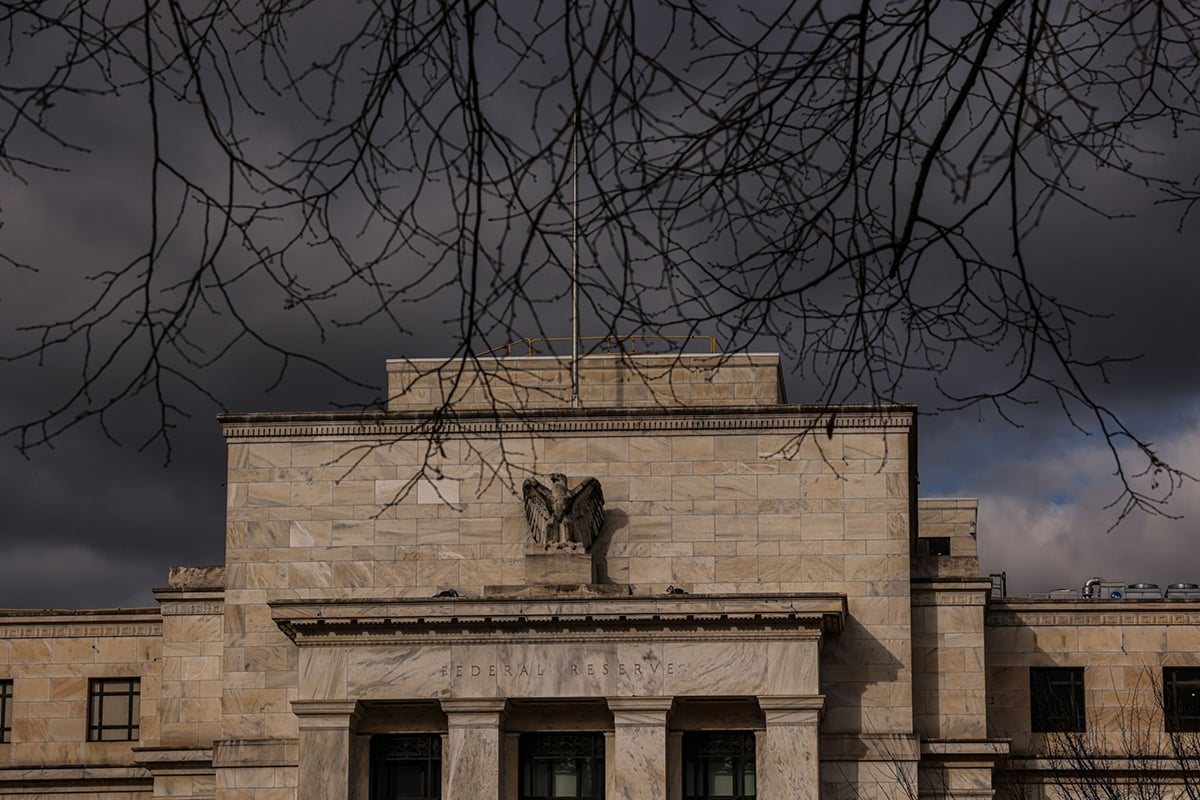
The record-long U.S. economic expansion is over after almost 11years, with the deepest recession in at least eight decades nowunder way.
|The world's largest economy shrank at a 4.8 percent annualizedpace in the first quarter, the biggest slide since 2008 and thefirst contraction since 2014, as the need to fight the coronavirus forced businesses to close andconsumers to stay home.
|The downturn, reported Wednesday by the Commerce Department, wasled by the steepest drop in consumer spending since 1980 and thefastest decline in business investment in almost 11 years. Theworse-than-expected report reveals the widescale hit to U.S. outputfrom Covid-19 and the subsequent freezing of economic activity.
|The current quarter is likely to be far worse, with analystsexpecting the economy to tumble by a record amount, based on datagoing back to the 1940s. Bloomberg Economics has projected a 37percent annualized contraction. UniCredit has predicted a 65percent contraction.
|These numbers end an expansion that began in mid-2009 when theeconomy began to recover from the financial crisis. Since then,gross domestic product (GDP) swelled by $7 trillion andunemployment fell to a five-decade low of 3.5 percent.
|The recessionary pain is being felt worldwide, withChina already reporting a sharp decline inoutput and the Eurozone set to deliver grim figures Thursday.
|As the U.S. government and states debate when and how fast tolift restrictions on companies and schools, there remainsconsiderable doubt over the duration of the economic slowdown andthe shape of the recovery. Early hopes for a rapid rebound havefaded, with most analysts assuming that a jump in activity once thevirus passes will be followed by a slower resumption of growth. Sofar, many data points signal a deepening contraction, while othershave shown slight improvement, according to a Bloomberg Economicstracker.
|
Consumers Are Wary
Despite massive government aid packages and near-zero interest rates, businesses big andsmall risk going bankrupt, while consumers may remain wary ofhitting shops and restaurants amid health concerns, higher debtburdens, and job insecurity.
|Another big question is how the recession will affect there-election chances of President Donald Trump, who lately has beenpushing for removal of the constraints after losing the ability torun on a strong economy.
|At the Federal Reserve, which slashed rates and rolled out aslew of emergency and unprecedented lending programs, ChairmanJerome Powell and colleagues are trying to limit the virus's damageto jobs and business while setting the conditions for recovery.They conclude a two-day meeting later today, with a statementexpected at 2 p.m. in Washington and a press conference by Powellat 2:30 p.m.
|While two quarters of contraction is considered by most toconstitute a recession, the official call in the United States ismade by the Business Cycle Dating Committee, a panel of economistsat the National Bureau of Economic Research. They look at a widerange of indicators including consumer spending, employment, andGDP.
|The analysis can take a while. In the last recession, whichbecame the longest since World War II, the committee didn't makethe determination for nearly a year after the downturn started.
|In any case, the GDP figures underscore what's already clearfrom government data showing 26 million Americans filing forunemployment, along with plunges in retail sales and factoryproduction.
|The 4.8 percent contraction in first-quarter GDP—the firstdecline since a 1.1 percent drop in 2014—compared with the medianprojection for a 4 percent drop in a Bloomberg survey ofeconomists. In January, analysts were forecasting growth of 1.6percent.
|Consumer spending, which had already begun to cool in the secondhalf of 2019, fell at a 7.6 percent rate. Changing consumptionhabits were evident in the report, as the biggest increase since2003 in spending on nondurable goods, such as food, was more thanoffset by the largest slump in purchases of durable goods in morethan 11 years.
|Consumption is forecast to be much weaker in the second quarterbecause broader government measures, including closures ofrestaurants and stores, didn't start in earnest until mid to lateMarch, and they continue today in much of the United States.
|Business investment, already down for three straight quarters asthe U.S.-China trade war kept companies guessing, also took a bighit. Companies slowed spending on structures and equipment.Investment in software rose, however, potentially reflectingefforts to help employees work from home.
|Exports of services fell by the most since 1975, reflecting adecline in international travelers coming to the U.S.
|The first-quarter GDP figures will be revised several times, andsome economists broadly expect the reading to become weaker as moredata and adjustments are made.
|—With assistance from KristyScheuble and Sophie Caronello.
||
From: ThinkAdvisor
|Complete your profile to continue reading and get FREE access to Treasury & Risk, part of your ALM digital membership.
Your access to unlimited Treasury & Risk content isn’t changing.
Once you are an ALM digital member, you’ll receive:
- Critical Treasury & Risk information including in-depth analysis of treasury and finance best practices, case studies with corporate innovators, informative newsletters, educational webcasts and videos, and resources from industry leaders.
- Exclusive discounts on ALM and Treasury & Risk events.
- Access to other award-winning ALM websites including PropertyCasualty360.com and Law.com.
*May exclude premium content
Already have an account? Sign In
© 2024 ALM Global, LLC, All Rights Reserved. Request academic re-use from www.copyright.com. All other uses, submit a request to [email protected]. For more information visit Asset & Logo Licensing.








